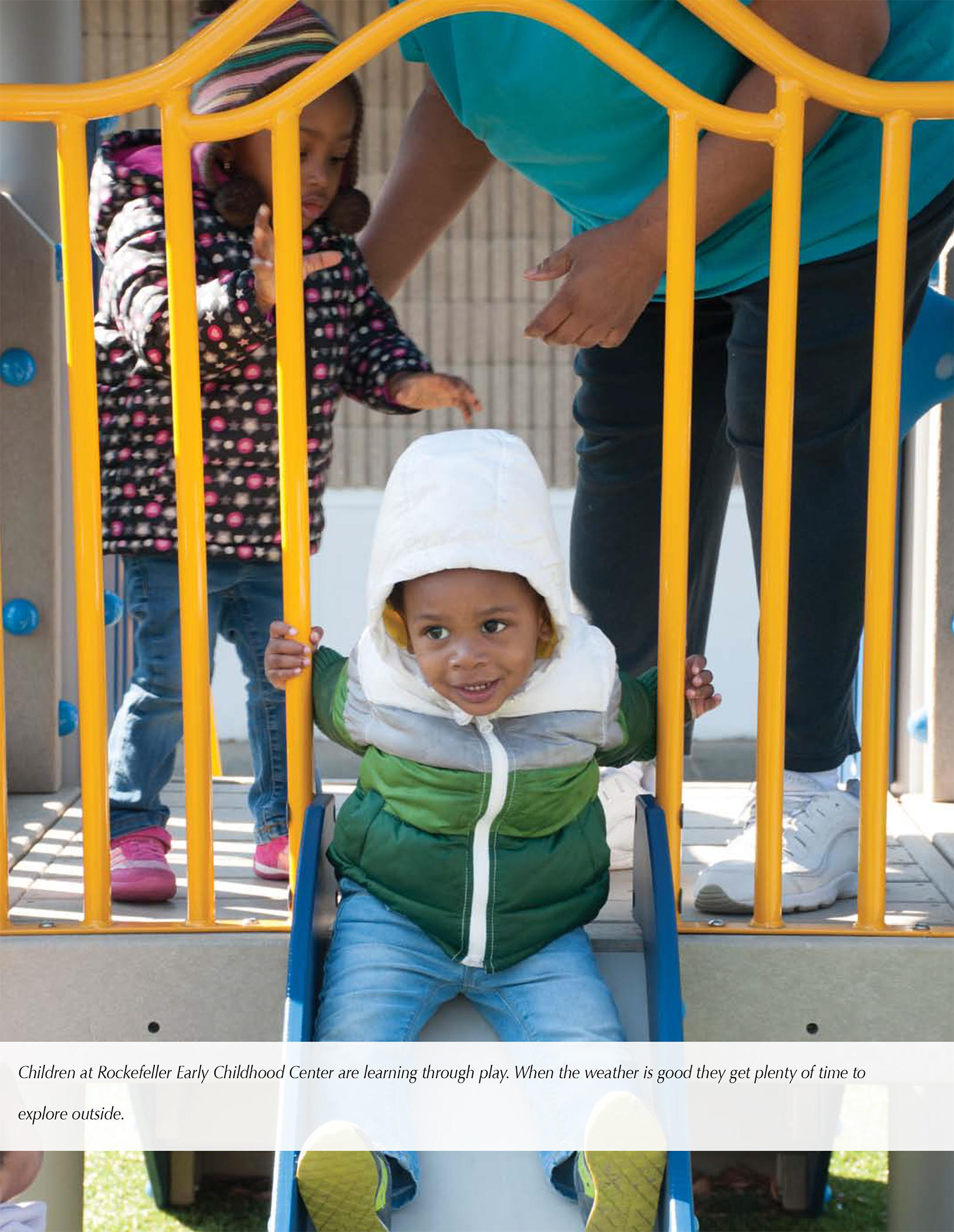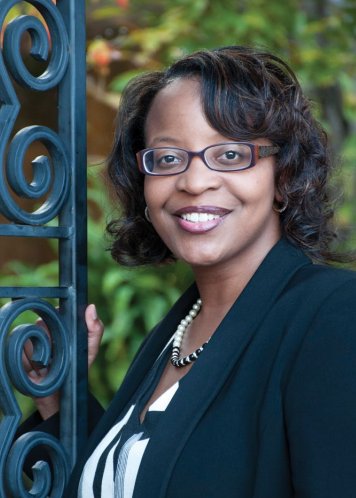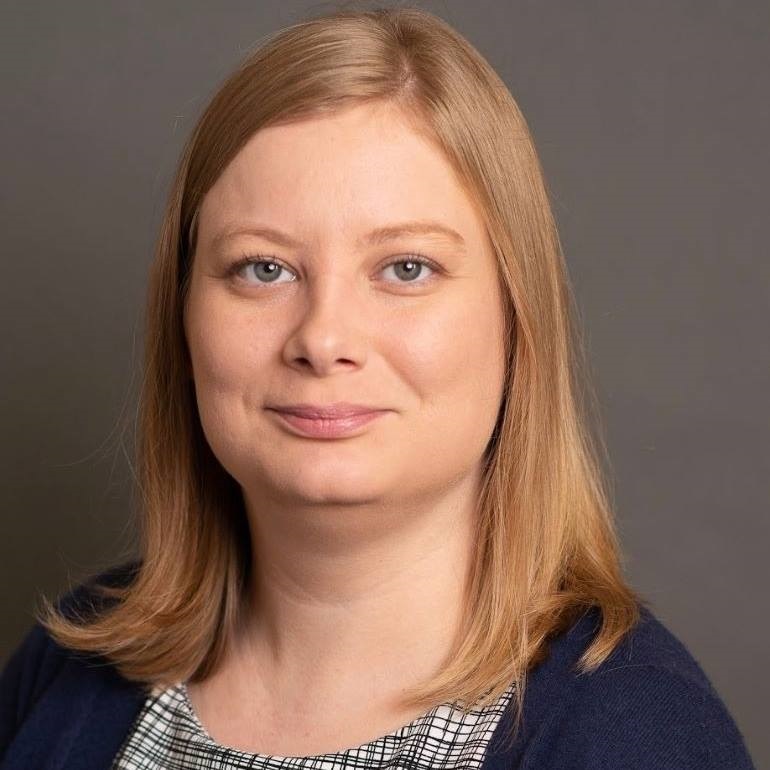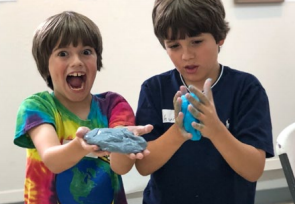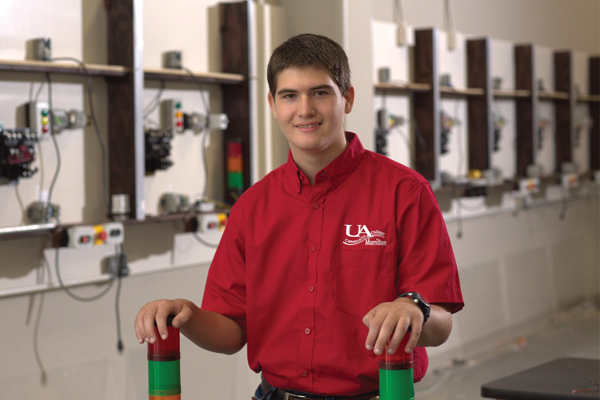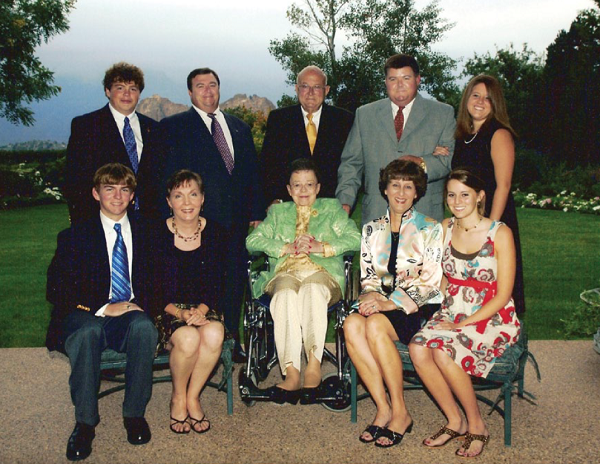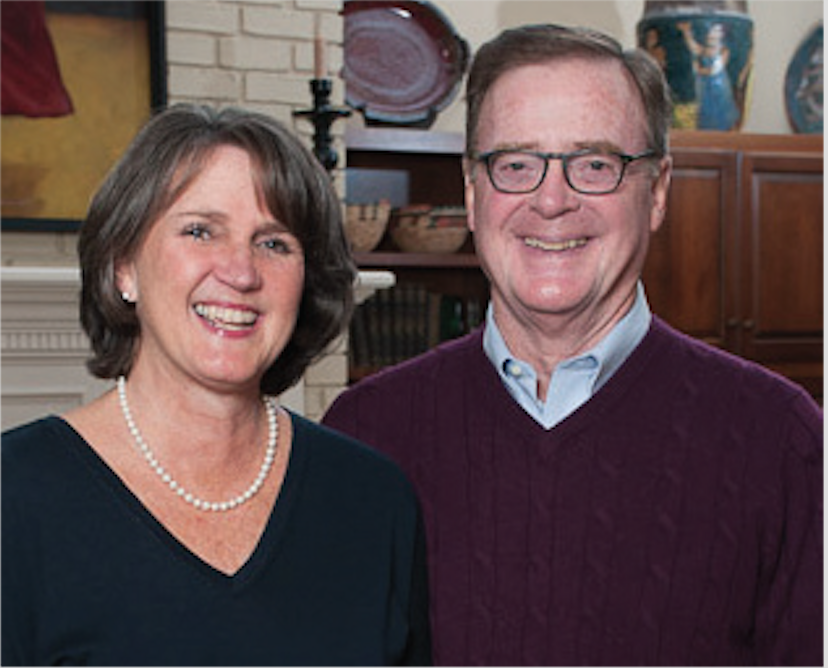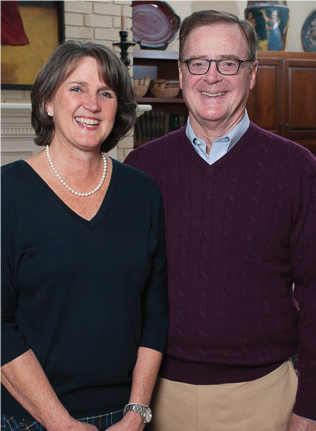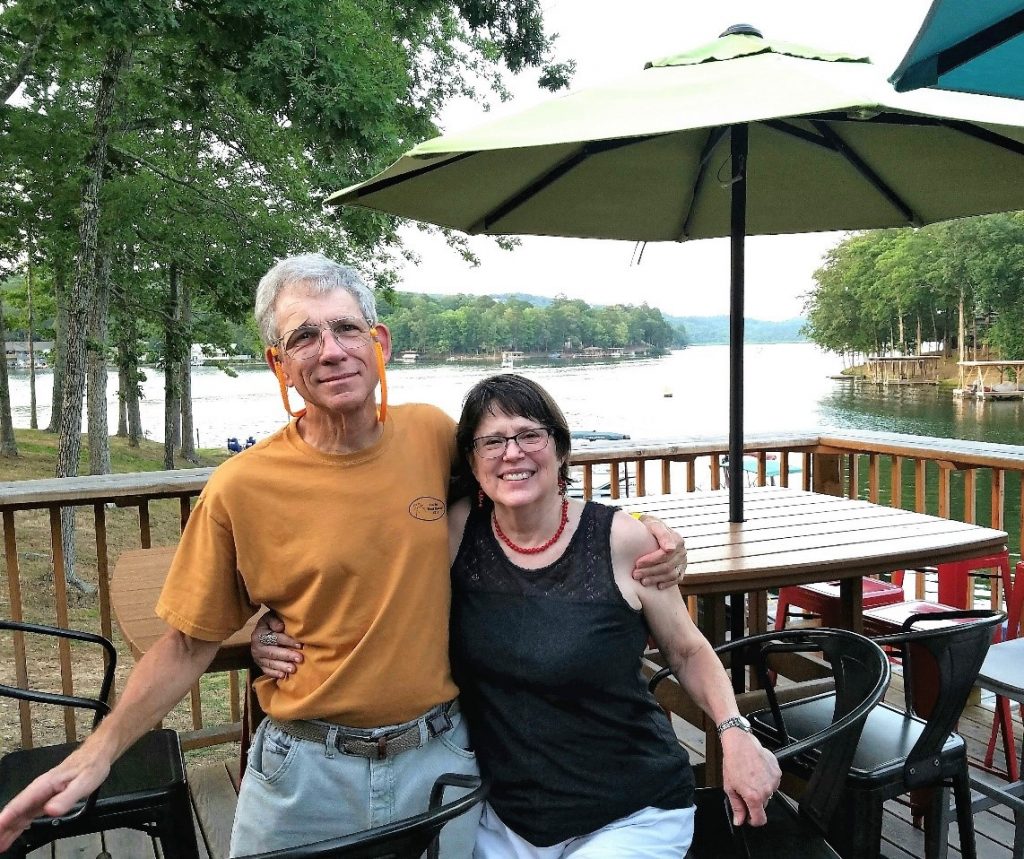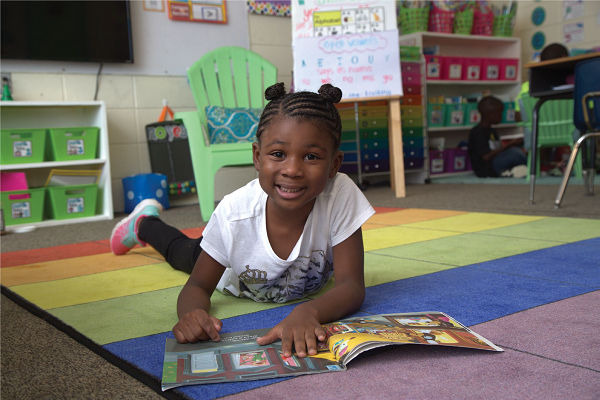
Brain science demonstrates that for children to reach their full potential, communities need to support the ability of families and childcare programs to provide specific experiences when the brain benefits most – in the first few years of life.
“Responsive interactions at the right stages of development help determine how well children think and regulate emotion,” said Nikki Edge, Ph.D., Assistant Director of the Research and Evaluation Division in the Department of Family and Preventive Medicine at the University of Arkansas for Medical Sciences (UAMS).
Development is a combination of genes and environment. We are born with most of the neurons we will ever have, but we need to build connections between neurons to help them communicate and process information. Dr. Edge uses the analogy that we all are born with telephone poles in our brain (the neurons). But we need interaction with our environment to string the wires between those poles (connections between neurons).
“Brains are wired by responsive interaction — that’s what builds the connections between neurons,” she said. “There are 100 trillion connections in one baby’s brain. Those connections are happening because of serve and return experiences with family members and teachers.”
Babies’ experiences are defined by those who care for them. Infants communicate by cooing, babbling, pointing and crying. Adults return by making noises in response, talking, picking them up, rocking them and feeding them. “Every time a child smiles, we smile back. Or not. The heart of quality care is warm tones, teachers who are talking at eye level, who respond to communications,” said Dr. Edge.
“It happens from moment one. By about age 2 there has been phenomenal growth in the child’s ability to communicate. We can predict third-grade reading abilities from age 2 because the wires they need have been set.” Brain science strategies work for everyone, parents as well as early childhood teachers. We can learn to be brain builders by following three major steps:
First, the physical environment should be stimulating, but not overstimulating. Infants and toddlers need books and simple toys because the way that children learn is through play. They need proper nutrition, a safe space to explore and a schedule that fits the age of the child.
Interactions are the heart of brain building. For example, young children in front of a TV may get stimuli, but they don’t get response. There is no serve and return. Even TV shows dedicated to learning can’t substitute for responsiveness from caregivers.
We need to help children learn to build the kind of relationships that will motivate them to do well for those who teach and love them. To build a healthy brain, we need to model the skills we are teaching — be responsive, keep our own composure, problem solve ourselves.
Lack of responsiveness to infants and toddlers is detrimental to brain development. When children are in an environment of fear and anxiety, in a family plagued by substance abuse or experiencing food insecurity, it is more difficult for brains to develop.
“Brain building is not a one-time thing. Our teaching works best when we make it a habit,” said Dr. Edge. “The learning process doesn’t occur unless we model, play and teach consistently. We want to build the kind of brain able to support good choices and impulse control, where fear and anxiety don’t triumph.”
Currently Dr. Edge is researching the social and emotional development of young children, teaching the teachers specific tools that develop essential soft skills. These skills include focus, planning and controlling impulses to stay on task, getting along, solving complex problems with peers, adjusting to the unexpected and working as a team. While teachers think of these as kindergarten readiness, employers think of them as skills they seek in employees.
“By age 2-3, we can teach soft skills using classroom strategies that help future employees function in the workplace,” said Dr. Edge. “The economic development implication of having high-quality, age-appropriate childcare also allows more moms to work because they are confident their children’s developmental needs are being met.”
In programs like REACH (Reaching Educators and Children) teachers learn to teach children to name their feelings. They use emotions posters and regularly talk about and name their feelings to increase emotional literacy. The idea is to teach young children how to stop and think. Some tactics include deep breathing, blowing bubbles and mimicking the turtle who goes into his shell to think before he comes out to act.
The research-based REACH Program gives teachers tools to help children learn conflict resolution and problem-solving skills. For example, if children are fighting over a toy, teachers support the children by stating the problem and suggesting a solution (like taking turns, getting another toy or having set times to play with the toy). The children choose a solution, rather than depending on the teacher to resolve the conflict.
REACH also helps teachers be a good example of social and emotional skills in the classroom. Other programs available in the state have similar goals. “The program Conscious Discipline helps teachers keep their composure and change the lens through which they view a situation,” Dr. Edge said. “They learn to view conflicts among children not as a problem, but as an opportunity to teach and learn, to build those little brains.”
Another research-based program, BehaviorHelp, allows teachers to focus on keeping children in danger of expulsion in the classroom. Research has shown the long-term consequences of being expelled from childcare, including future school failure, adolescent behavior problems and even adult incarceration.
Through BehaviorHelp, teachers receive training, technical assistance and mental health consultation resources from UAMS Project PLAY, the Arkansas Department of Human Services Early Childhood Education or Arkansas State University. The program is geared to meet the needs of each individual child and their teacher. In fiscal year 2018, BehaviorHelp served teachers of 376 children at 206 childcare centers in 54 Arkansas counties.
Providing the right environment and experiences for infants and toddlers ensures healthy brain-building early on. That’s easier than expensive, intensive therapy that could be needed later on if brains are not working to their full potential.
“It is incredibly powerful to remind teachers that, yes, there are some things they can’t change. But we can shape the brains of those kids eight hours a day in a healthy space with a responsive caregiver,” said Dr. Edge. “Eight hours a day of responsive, healthy interactions goes a long way even if the other environments are not optimal. That can be life changing, brain changing!”
Community programs that ensure food security for all children and help provide living environments that are free from trauma, domestic violence and substance abuse are keys to brain building. Another way to support child development is to become engaged in creating innovative programs like community-funded childcare or encouraging employers to consider operation of quality childcare facilities.
“It is nearly impossible to run a quality program on what parents can pay,” said Dr. Edge. “Subsidizing quality childcare and regulating the experiences are big challenges. The most important part of brain building, responsive interaction, is the hardest thing to regulate.”
Often current regulations fail to recognize the importance of interaction in early childhood education. Recently, Arkansas DHS/Division of Child Care and Early Childhood Education strengthened regulations requiring a 1-5 teacher ratio. While it is an improvement from 1-6, it is still difficult for one teacher to have individual responses to five infants or toddlers.
“The policies aren’t catching up with the research quickly enough. I feel a sense of urgency,” said Dr. Edge. “One thing everyone can do is educate policy-makers in their community about utilizing brain science research to help children reach their full potential.”
Learn more about Dr. Edge’s work at www.uams.org.

